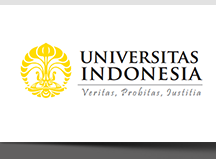Journal of Materials Exploration and Findings
Abstract
Energy and chemical companies use pipelines to transfer oil, gas, and other materials from one place to another, within and between their plants. Pipeline integrity is an important concern because pipeline leakage could result in serious economic or environmental losses. Some research has applied to understand the effect of extrapolation value of the minimum thickness of pipeline by using the Extreme Value Theory. In this research, both statistical models and Extreme Value methods were applied and developed for the reliability of the pipeline by assuming the constant corrosion rate and deviation due to measuring devices were neglected. The research obtained that using the General Pareto Distribution technique, the result found that the extreme value method seems not close agreement with the Pareto Distribution. While using the Generalized Extreme Value Technique found remaining life of 344 blocks data of the pipeline around 5.23 years. It could be suggested that next pipeline pigging should be conducted within 2.5 years.
References
Antaki, G 2003, Piping and Pipeline Engineering, Marcel Dekker Inc., New York.
Cordell, J & Vanzant, H 2003, The Pipeline Pigging Handbook, 3rd edn, Clarion Technical Publishers, Houston, Texas.
Fisher, R A & Tippett, L H C 1928, ‘On the estimation of the frequency distributions of the largest or smallest member of a sample’, Proceedings of the Cambridge Philosophical Society, vol. 24, pp. 180–190.
Gilli, M & Kellezi, E 2003, An Application of Extreme Value Theory for Measuring Risk, Elsevier Science.
Hartoyo, F, Irianti, G P, Fatriansyah, J F, Ovelia, H, Mas' ud, I A, Digita, F R, Fauzi, A & Anis, M 2023, ‘Weibull distribution optimization for piping risk calculation due to uniform corrosion using Monte Carlo method,’ Materials Today: Proceedings, vol. 80, pp.1650-1655.
Liu, S & Meeker, W Q 2015, ‘Statistical Methods for Estimating the Minimum Thickness Along a Pipeline’, Technometrics.
McNeil, A J & Saladin, T 1998, ‘Developing Scenarios for Future Extreme Losses Using the POT Model’, ETH Zentrum, Zurich.
Meeker, W Q & Escobar, L A 1998, Statistical Methods for Reliability Data, John Wiley and Sons, New York.
Ramadhani, F A 2016, Aplikasi Extreme Value Theory (EVT) dalam Penaksiran Distribusi Tail dari Distribusi Severity Loss, Universitas Indonesia, Depok.
Reich, B 2016, ‘Overview of Extreme Value Analysis (EVA)’, Rossbypalooza, p. 3, North Carolina State University, Chicago.
Sari, Y D W & Sutikno 2013, ‘Estimasi Parameter Generalized Pareto Distribution Pada Kasus Identifikasi Perubahan Iklim di Sentra Produksi Padi Jawa Timur’, Jurnal Sains dan Seni Pomits, Institut Teknologi Sepuluh November, Surabaya.
Shiyao, L 2013, Statistical methods for extreme values and degradation analysis, Ph.D. thesis, Iowa State University.
U.S. Department of Transport 2023, Pipeline & Hazardous Materials Safety Administration: Pipeline Incident, https://www.phmsa.dot.gov/data-and-statistics/pipeline/pipeline-incident-20-year-trends.
Wijaya, A 2021, Analisis Data Inspeksi Untuk Penentuan Risk Based Inspeksi Pada Pipa Penyalur Gas Jual Bawah Laut Yang Telah Berumur 28 Tahun, Universitas Indonesia, Jakarta.
Yudi, M 2002, Analisa Umur Pakai Sistem Pemipaan Produksi Minyak dan Gas Menggunakan Metoda RBI, Universitas Indonesia, Jakarta.
Recommended Citation
Simeon, Rony Prayitno; Siradj, Eddy Sumarno; and Kurniawan, Tedi
(2025)
"Remaining Life Analysis of Pipeline Gas with Extreme Value Theory,"
Journal of Materials Exploration and Findings: Vol. 4:
Iss.
1, Article 2.
DOI: 10.7454/jmef.v4i1.1083
Available at:
https://scholarhub.ui.ac.id/jmef/vol4/iss1/2
Included in
Materials Science and Engineering Commons, Operations Research, Systems Engineering and Industrial Engineering Commons, Other Engineering Commons










